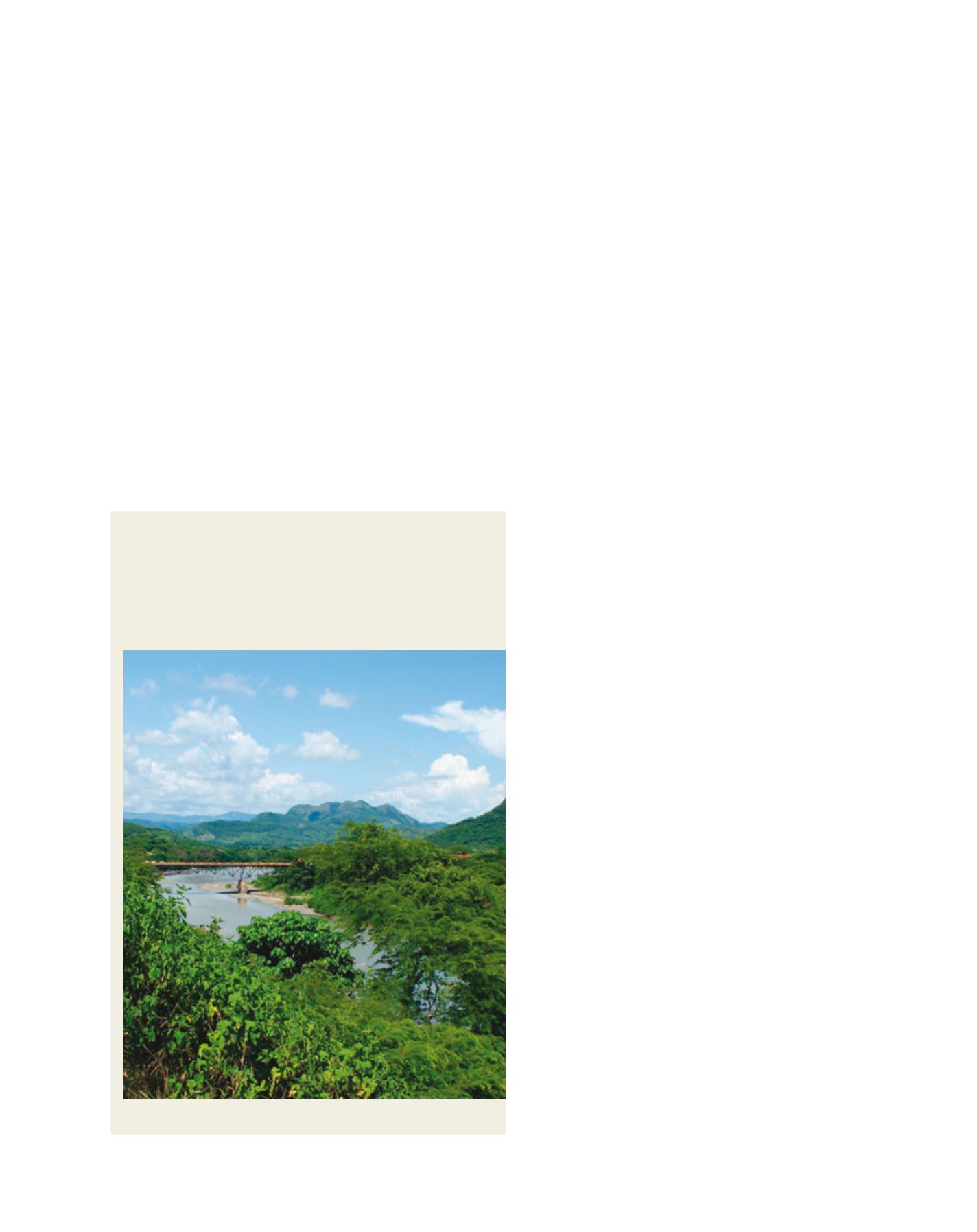

[
] 26
W
ater
D
iplomacy
Water diplomacy in practice
BRIDGE operates in six basins in Latin America – three in
Mesoamerica and three in the Andes in South America – and three
sub-basins in South-East Asia. In Mesoamerica BRIDGE has demon-
stration projects in the Coatan (Guatemala-Mexico), Goascorán
(Honduras-El Salvador) and Sixaola (Costa Rica-Panama) basins. In
the Andes, BRIDGE project sites are in the Zarumilla (Peru-Ecuador),
Catamayo-Chira (Peru-Ecuador) and Titicaca (Peru-Bolivia) basins.
While the basins have distinct differences within and across regions,
there are key strategic similarities in how water diplomacy works
across all of the project’s transboundary basins. BRIDGE also oper-
ates in South-East Asia on three transboundary tributaries of the
Mekong River: the Sekong (Viet Nam-Lao People’s Democratic
Republic (PDR)-Cambodia), the Sre Pok (Viet Nam-Cambodia),
and the Sesan (Viet Nam-Cambodia).
BRIDGE has been particularly active in Latin America. In the
Goascorán basin shared between Honduras and El Salvador, IUCN
has worked with partners and stakeholders to revitalize a basin
management group responsible for joint planning and manage-
ment, constituting a major step forward in cooperation between
the two countries. Key to the success of this effort was the inclusion
of stakeholder groups in the planning body – greatly
increasing its legitimacy, status and footprint by
including local development agencies, national level
ministries and private actors. Through these actions,
BRIDGE provided essential support for the formation
of a new transboundary committee which aims to
develop the financial and institutional model for the
basin – ensuring that the institutional arrangement
is sustainable long-term. This is a powerful example
of how strengthening stakeholder participation can
transform weak institutions into legitimate bodies of
governance while enhancing cooperation in a trans-
boundary context.
Similarly, efforts to increase cooperation and
improve water governance capacity in the Sixaola
basin are paying off. The basin is shared by Panama
and Costa Rica, and the Permanent Binational
Commission has managed cross-border relations
between the two countries for some time. However,
technical and legal constraints have meant that the
institution was unable initiate activities in the water-
shed that would enable the establishment of the
Sixaola Basin Commission. BRIDGE worked with the
Permanent Binational Commission, the governments
of Panama and Costa Rica, partners in the region and
the IUCN Environmental Law Centre to help clarify
the role of the Sixaola Basin Commission, drafting
bylaws and clarifying statutes to enable it to operate
and function as a transboundary basin committee.
Following this, BRIDGE was asked to support prepa-
ration of a Code of Conduct for the Sixaola Basin that
would emphasize the principles of integrated water
resources management and meet the requirements
of the Panamanian and Costa Rican governments.
Working across multiple scales with multiple stake-
holders, water diplomacy in action again delivered a
major step forward in institutionalizing cooperation
at the basin level and preparing the foundation for
a functioning transboundary river basin commission.
BRIDGE’s work in the Andes has focused more
on creating shared data and information plat-
forms, reforming existing institutional structures
and building transboundary governance and water
management capacities in institutions at the national
level. Significantly, achievements by the Zarumilla
Commission have served as a model for cooperation
between Peru and Ecuador, directly influencing water
policy in both countries. Successes in the Zarumilla
basin have strengthened confidence to a point where
both presidents have signed a declaration agreeing
to establish further transboundary basin commis-
sions in the Catamayo-Chira and Puyango-Tumbes
basins, where the BRIDGE project is active. As a
result communities, municipalities and state institu-
tions have begun the process of dialogue and working
together to establish new relationships, improve
communication and formulate agreements across
multiple levels of water users, technical experts and
public officials.
Cooperation catches on in the Goascorán
The goal in the Goascorán watershed is to integrate transboundary
watershed management into broader efforts to improve local livelihoods.
“We start from the assumption that water governance alone is not
sustainable,” says Luis Maier from Fundación Vida. “Good water
management is a function of good land management in a larger sense, one
that includes issues like job creation.”
The Goascorán is shared between El Salvador and Honduras
Image: ©IUCN\Manuel Farrias


















